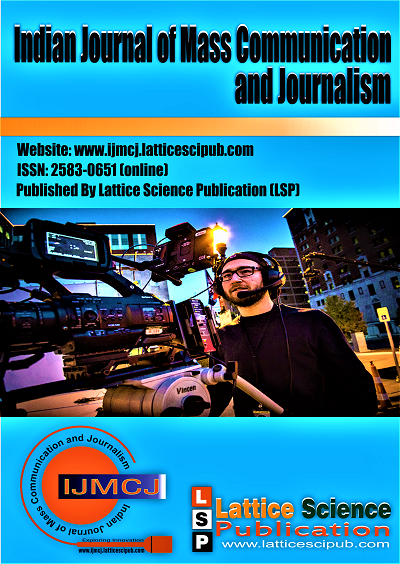The Cinematic Depiction of Media’s Social Responsibility: An Analysis of Journalism Films
Main Article Content
Abstract
Journalism has been portrayed on the silver screen many times. Over the years, filmmakers have been attracted by the role of the journalist, and the news industry has been represented in a variety of ways in Indian cinema. This study examines how the concept and theory of ‘social responsibility of the media’ has been depicted in journalism films. In this context, it is imperative to understand that the professional practice of journalism in the past shows that the press has the responsibility to act in the public interest. Whether it is the role of the press in India’s freedom movement or the investigative function of the press in unearthing corruption and crime, the media has social duties and obligations towards society. Journalism and the media are often called the watchdogs of Indian democracy, and hence, it cannot be denied that society has some positive expectations from the media. These expectations go beyond journalism’s obvious normative role(s). This paper will examine how the media’s social responsibility has been depicted in cinema. The researcher will do a thematic analysis of journalism films that portray the social responsibility of journalism. Research on popular culture portrayals is important because such portrayals cultivate popular perceptions as well as myths about journalism. Film theory suggests that films are a reflection of real-life (to some extent), and therefore, films play an important role in documenting the contemporary trends in journalism. This study is based on the theory of ‘film analysis’ to understand the relevance of cinematic representations of social responsibility in journalism.
Downloads
Article Details

This work is licensed under a Creative Commons Attribution-NonCommercial-NoDerivatives 4.0 International License.
How to Cite
References
Akhtar, F. (Director). (2004). Lakshya [Motion Picture]. Anand, T. (Director). (1989). Main azaad hu [Motion Picture].Bhandarkar, M.(Director). (2005). Page 3 [Motion Picture].
Khan, K. (Director). (2006). Kabul Express [Motion Picture].
McNair, B. (2010). Journalists in Film: Heroes and Villains. Edinburgh: EdinburghUniversity Press. [CrossRef]
McQuail, D. (2010). Mc Quail's Mass Communication Theory. New Delhi: Sage. McQuail, D. (2013). Journalism and Society. London:Sage. [CrossRef]
Mikos, L. (2014). Qualitative Data Analysis. In U. Flick. London: Sage. Mirza, A. (Director). (2000). Phir Bhi Dil Hai Hindustani[Motion Picture].
Painter, C. (2019). Fictional Representations of Journalism. In C. Painter, Oxford ResearchEncyclopedia, Communication (pp. Page 1-23). USA: Oxford. [CrossRef]
Raghavendra, M. K. (2010). Peepli Live and the gesture of concern. Economic and PoliticalWeekly, 13-15.
Rizvi, A. (Director). (2010). Peepli Live [Motion Picture].
Saltzman, J. (n.d.). Analyzing the Images of the Journalist in Popular Culture: a UniqueMethod of Studying the Public’s Perception. .
Sharma, R. (Director). (1986). New Delhi Times [Motion Picture].
Teays, W. (2012). Seeing the Light. Exploring Ethics through Movies.UK: Wiley-Blackwell.
UPADHYAYA, A. (2019, March 17). Shashi Kapoor’s New Delhi Times gives a true pictureof journalism, warts and all. Retrieved from
www.theprint.in: https://theprint.in/features/reel-take/shashi-kapoorsnew-delhi-times-gives-a-true- picture-of-journalism-warts-and-all/206916/
Varma, R. G. (Director). (2010). Rann [Motion Picture].





